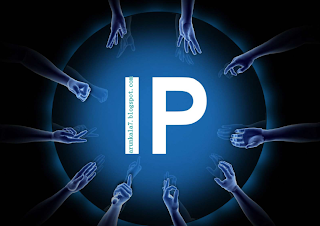What Is IP/TCP ? ? ?
IP(
Internet Protocol address )

An identifier for a computer or device on a TCP/IP network. Networks using the TCP/IP protocol route messages based on the IP address of the destination. The format of an IP address is a 32-bit numeric address written as four numbers separated by periods. Each number can be zero to 255. For example, 1.160.10.240 could be an IP address.
Every machine on a network has a unique identifier. Just as you would address a letter to send in the mail, computers use the unique identifier to send data to specific computers on a network. Most networks today, including all computFers on the Internet, use the TCP/IP protocol as the standard for how to communicate on the network. In the TCP/IP protocol, the unique identifier for a computer is called its IP address.
There are two standards for IP addresses: IP Version 4 (IPv4) and IP Version 6 (IPv6). All computers with IP addresses have an IPv4 address, and many are starting to use the new IPv6 address system as well. Here's what these two address types mean:
- IPv4 uses 32 binary bits to create a single unique address on the network. An IPv4 address is expressed by four numbers separated by dots. Each number is the decimal (base-10) representation for an eight-digit binary (base-2) number, also called an octet. For example: 216.27.61.137
- IPv6 uses 128 binary bits to create a single unique address on the network. An IPv6 address is expressed by eight groups of hexadecimal (base-16) numbers separated by colons, as in 2001:cdba:0000:0000:0000:0000:3257:9652. Groups of numbers that contain all zeros are often omitted to save space, leaving a colon separator to mark the gap (as in 2001:cdba::3257:9652).
At the dawn of IPv4 addressing, the Internet was not the large commercial sensation it is today, and most networks were private and closed off from other networks around the world. When the Internet exploded, having only 32 bits to identify a unique Internet address caused people to panic that we'd run out of IP addresses. Under IPv4, there are 232 possible combinations, which offers just under 4.3 billion unique addresses. IPv6 raised that to a panic-relieving 2128 possible addresses. Later, we'll take a closer look at how to understand your computer's IPv4 or IPv6 addresses.
How does your computer get its IP address? An IP address can be either dynamic or static. A static address is one that you configure yourself by editing your computer's network settings. This type of address is rare, and it can create network issues if you use it without a good understanding of TCP/IP. Dynamic addresses are the most common. They're assigned by the Dynamic Host Configuration Protocol (DHCP), a service running on the network. DHCP typically runs on network hardware such as routers or dedicated DHCP servers.
Dynamic IP addresses are issued using a leasing system, meaning that the IP address is only active for a limited time. If the lease expires, the computer will automatically request a new lease. Sometimes, this means the computer will get a new IP address, too, especially if the computer was unplugged from the network between leases. This process is usually transparent to the user unless the computer warns about an IP address conflict on the network (two computers with the same IP address). An address conflict is rare, and today's technology typically fixes the problem automatically.

An IP address is a sequence of four blocks of numbers that unique address is for a computer or a device on a TCP/IP network. IP Location Finder is the best tool to identify the physical location of any device.
ReplyDelete